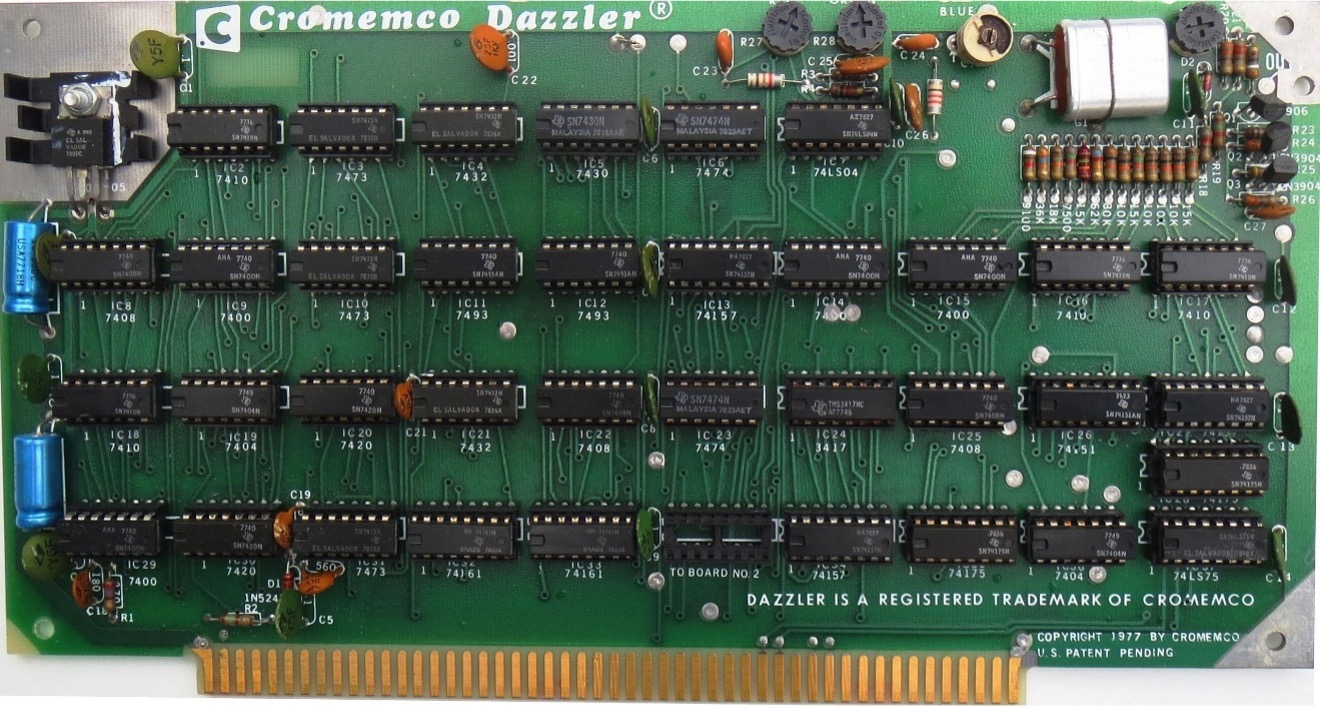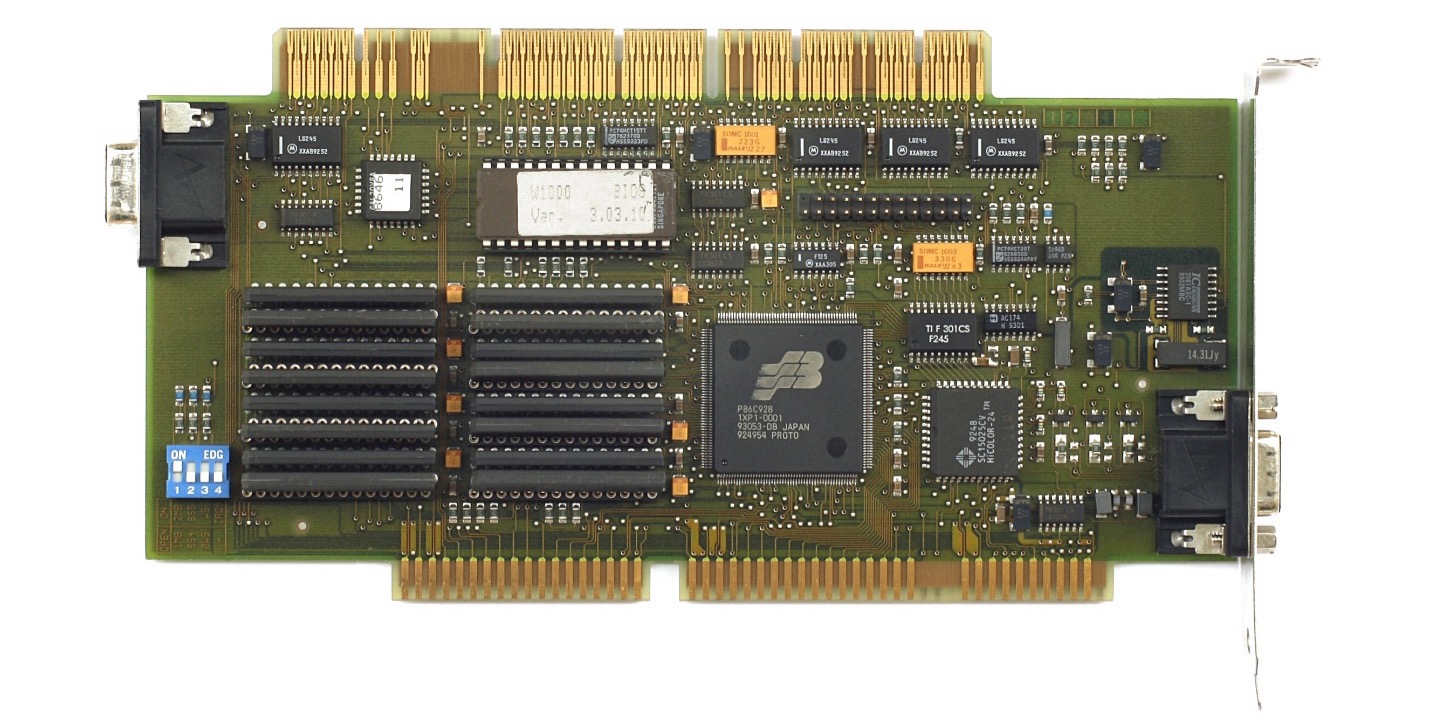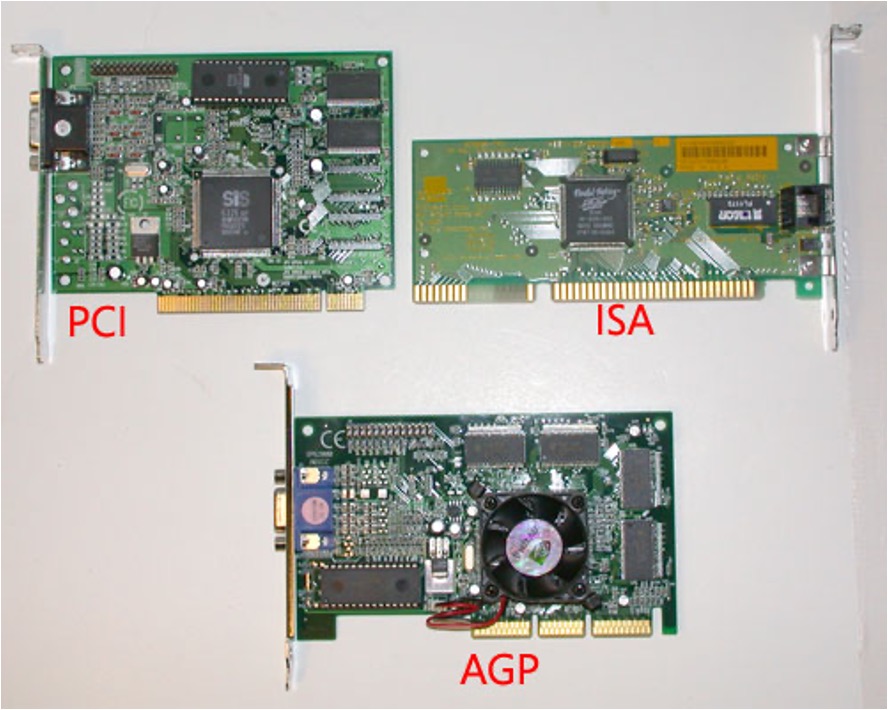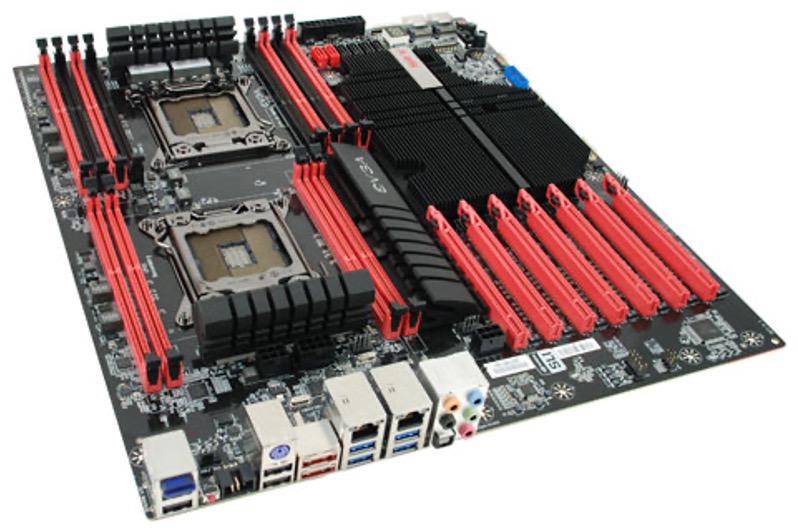The S-100 bus, introduced in 1974 with the Altair 8800, became a widely used microcomputer expansion bus. The Cromemco Dazzler, released in 1976, was the first color graphics card for S-100 systems and influenced later graphics developments. IBM introduced the ISA bus in 1981, which evolved into the AT bus with 16-bit support. Competing bus standards, including MCA, EISA, and VESA Local Bus, emerged between 1986 and 1992, leading to compatibility issues. Intel developed PCI in the late 1980s, standardizing it in 1992. AGP was introduced in 1997 for improved graphics performance, followed

Before the PC, the open microcomputers used the S-100 bus, also known as the Altair bus, introduced in 1974 with the Altair 8800 microcomputer and designed by MITS (Micro Instrumentation and Telemetry Systems). It was named S-100 after the 100-pin connector used for expansion cards.

The Cromemco Dazzler, introduced in 1976, was a graphics card for S-100 bus computers and the first color graphics card for microcomputers. It led to a series of advanced graphics products from Cromemco, which, by 1984, were used by 80% of US television stations for displaying weather, news, and sports graphics.
S-100 to ISA bus
As the 8-bit data path and 16-bit address path S-100 bus gained popularity in the ’70s and ’80s, it became designated as the American National Standard IEEE Std 696–1983. However, despite that, IBM chose not to use it and designed its own add-on circuit board and connector.
The PC continued the fashion. Graphics boards were plugged into the slots for power and signaling to/from the CPU and system memory. When the IBM PC was introduced in 1981, it introduced the ISA (Industry Standard Architecture) card slot for expansion. In those days, a circuit board was needed to drive a modem, drive the display, and even drive the hard disk—since then, all that has been integrated into a chipset.
ISA to EISA buses
The original ISA bus was 8 bits wide. When IBM introduced the PC/AT, it extended it to 16 bits and almost doubled its speed to 8 MHz, and it became known as the AT bus. For the next few years, several new proprietary bus designs were introduced by IBM: MCA (1987 with PS2 launch), XT (1983), and EISA, a 32-bit backward-compatible design (1988). Although often associated with IBM, EISA (Extended Industry Standard Architecture) was not developed by the company. Instead, it was introduced in September 1988 by a consortium of nine IBM competitors: Compaq, AST Research, Epson, Hewlett-Packard, NEC, Olivetti, Tandy, Wyse, Technology, and Zenith Data Systems.

Winner 1000, a VGA board with EISA tab (top) and ISA tab (bottom); a VGA connector is present at the ends of the board. (Source: ELSA/Wikipedia)
VL bus
Clone PC suppliers focused on low-cost systems found EISA too expensive due to IBM’s licensing fees. As a result, a private bus was developed in 1992 and branded by the Video Electronics Standards Association (VESA) as the VL bus. This led to a period of instability in the PC industry from 1986 to 1992, marked by competing bus standards with no physical or interoperability compatibility, and specifications that were too flexible, allowing for modifications. As a result of the widespread incompatibility, there were frequent system crashes, with graphics boards having only a 50% chance of functioning across different computers.

But the bus wars weren’t over yet.
PCI
In the late 1980s, motivated by the need for market stabilization and growth, and the demand for a higher-bandwidth add-in board (AIB) interface, Intel began the design of an advanced bus. That effort resulted in the Peripheral Component Interconnect (PCI) bus, which was introduced in 1984 as a proposed new standard. It was broadly adopted, and, in 1992, the PCI Special Interest Group (PCI-SIG) was formed to continue developing and promoting the PCI standard.

PCI’s improved interrupt request (IRQ) sharing capabilities helped to alleviate conflicts from IRQs, which were common with ISA. It also introduced a more standardized approach to bus mastering, allowing devices to directly access system memory without relying solely on the CPU. PCI was created to replace the VL and older buses.

By 1995, PCI was well established and, within a year, vanquished VL, MCA, EISA, and all others—peace at last in PC land.
AGP
The PCI was superseded by the accelerated graphics port (AGP) in 1997. The AGP was developed to meet the increasing need for speed in 3D graphics applications, which were becoming more common in consumer computers. It improved on the PCI bus by offering a direct connection between the graphics card and the motherboard chipset. It also allowed for direct access to system memory for texture storage, which is important for texture mapping in 3D graphics.
AGP provided higher bandwidth compared to PCI, initially starting at 266 MB/s for AGP 1x and eventually reaching 2.1 GB/s with AGP 8x.The first AGP boards and motherboards were introduced in mid-1997, and the standard was updated multiple times during its lifespan.
PCI Express—getting off the bus

PCI Express (PCIe) was first introduced in 2003, with the specification being finalized in July of that year. It began appearing in consumer computers in 2004.
Intel led the development of PCIe as a replacement for the aging PCI standard, creating a fundamentally different architecture that used serial point-to-point connections rather than the shared parallel bus design of PCI. This new approach allowed for much higher bandwidth and scalability.
The initial PCIe 1.0 specification offered 250 MB/s per lane in each direction (2.5 GT/s), with configurations ranging from x1 (one lane) to x16 (16 lanes). This meant that an x16 connection could provide up to 4 GB/s of bandwidth, significantly more than the 1 GB/s maximum of PCI-X.

In June 2022, the PCI Special Interest Group (PCI-SIG) announced they were beginning work on the PCIe 7.0 specification, with a target release date of 2025. Their stated goal was to double the data rate again from PCIe 6.0, potentially reaching 128 GT/s (gigatransfers per second), which would provide approximately 256 GB/s of bidirectional bandwidth on an x16 link.
These buses have evolved significantly over the years, with PCIe becoming the dominant standard for modern PCs. However, PCI can still be found on motherboards for older peripherals such as disk drives and network interfaces.
LIKE WHAT YOU’RE READING? INTRODUCE US TO YOUR FRIENDS AND COLLEAGUES.